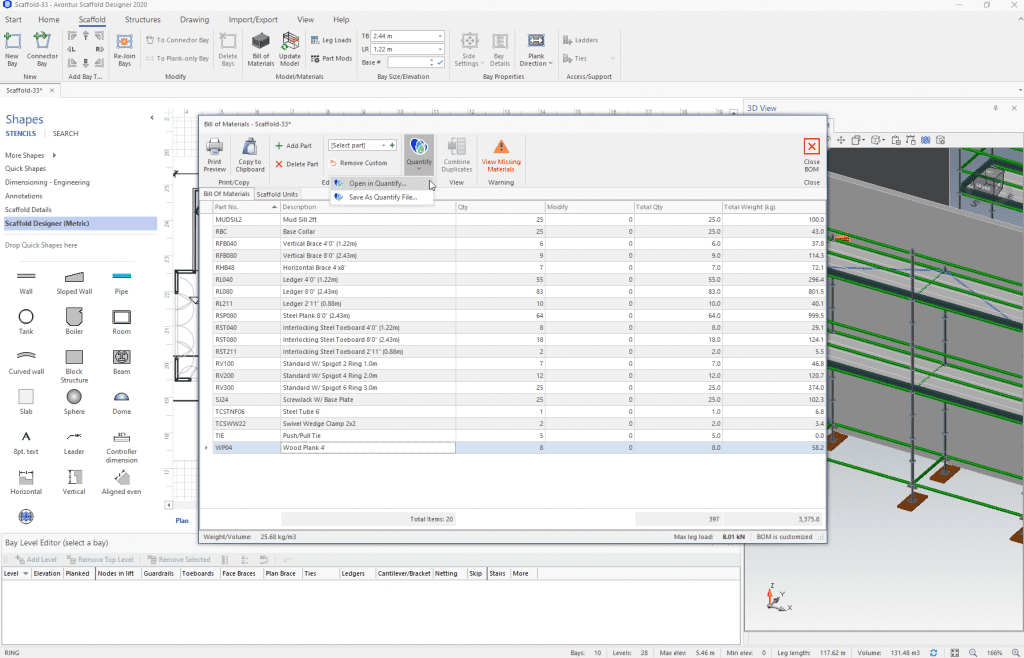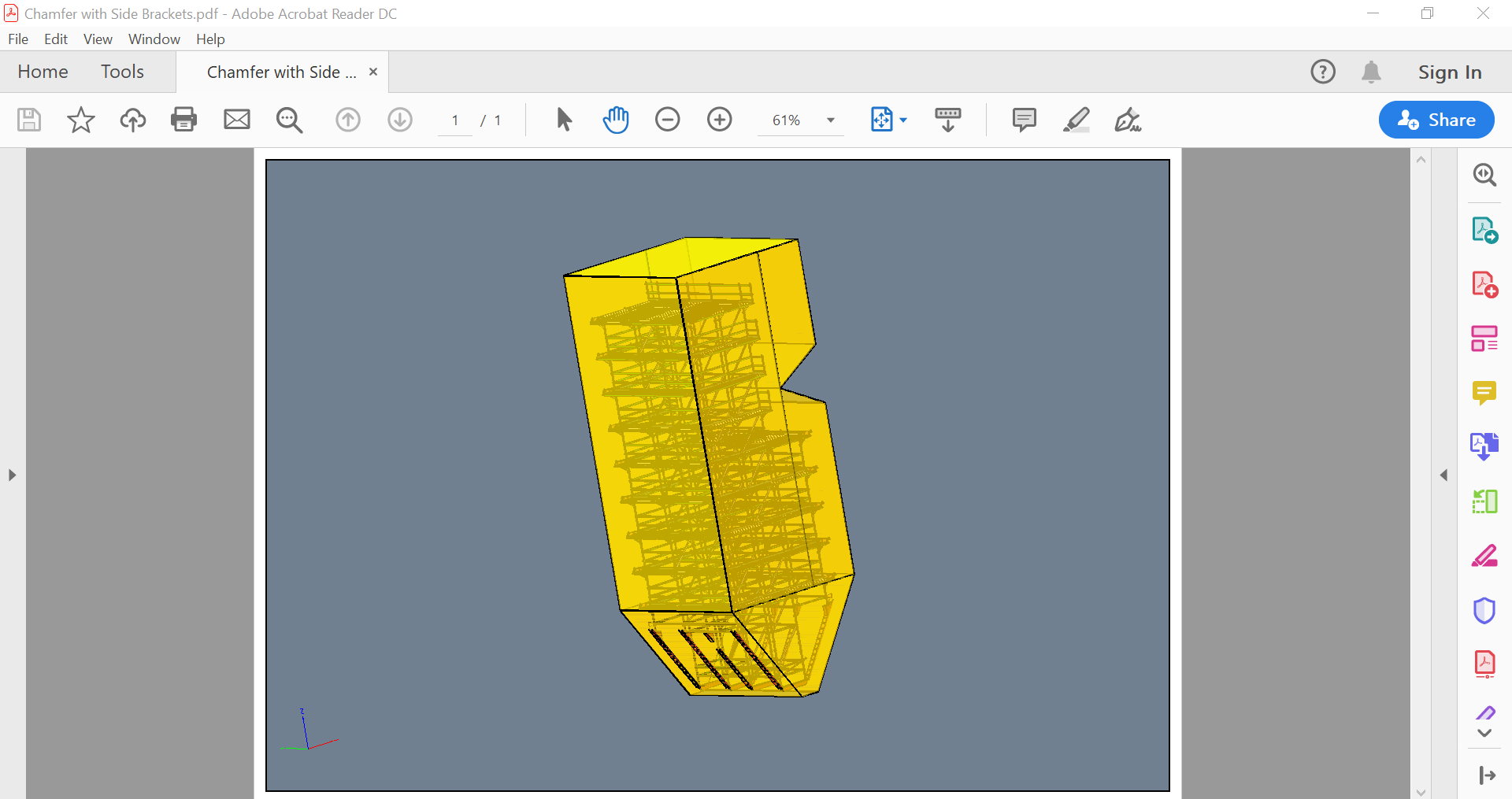System Scaffolding Is Here for Good: Ease Your Transition into It
Scaffolds are generally quite unassuming. When people walked past the construction of Burj Khalifa, we doubt they were admiring the… Read More

Material and cost calculations form a major part of a scaffolding business. They allow a company to track its scaffolding inventory and furnish jobs with adequate materials at the most profitable rate.
However, many companies still rely on legacy methods like manual scaffold design and material calculation.
You know how frustrating it can be when just a small mistake results in expensive rework. Worse, you end up wasting precious time to amend your mistakes and can even lose credibility among your customers.
That’s why it’s so important to get your calculations right, the first time. This is where modern, industry-specific software can be beneficial.
Want to know more? You’re in the right place, just keep reading!
No doubt, relying on established scaffolding material and cost calculation is convenient as everyone in your organization is used to the inner workings of your company.
But familiarity doesn’t always translate into improved efficiency.
To address the challenges with current calculation methods, first let’s visualize how scaffolding jobs come about and are usually managed.
Scenario: Perhaps a client has approached you with a scaffolding proposal request. Or maybe there’s a new scaffolding bid that you’ve got your sights on. No matter the case, the next step would be to design scaffolding as per project requirements.
But to design and calculate scaffolding materials, you must gather building information like planned use, total working area, height and length of scaffolding, maximum live and dead load weight. Then, proceed with designing the scaffolding using one of the two methods below:
Method 1: Given the complexity of non-industry-specific software like AutoCAD, you may still resort to low-tech hand-drawn scaffolding design, which is then counted manually for the Bill of Materials (BOM).
However, manually sourcing and inputting this information poses a risk of data inaccuracy. And more complex designs only lead to a higher risk of human error in calculating scaffolding materials manually.
On the other hand, many companies also use a more modernized approach to designing scaffolds and counting materials.
Method 2: Non-industry-specific solutions like AutoCAD are widely used to design scaffolding. But these solutions lack capabilities needed by scaffolding companies. For example, AutoCAD only gets the designing part right; the same can’t be said for material calculation. You must then integrate AutoCAD with another app to get the BOM.
The distinct disconnect between manual scaffolding design process and material calculation will only result in design rework and delayed building time.
After scaffolding design and material calculation comes cost estimation. A competitive estimate is one of the keys to landing that bid and getting the proposal approved by clients.
But let’s face it, the scaffolding industry and its competitive bidding nature may cause companies to underestimate the project scope and rush through the entire process. Coupled with a disconnected scaffolding system, just a small design inaccuracy can lead to expensive material and cost miscalculations.
Does the scenario below seem familiar?
Scenario: In the heat of getting the scaffolding proposal done, you overlooked the fact that the job site is on a sloping surface. In your design, you used normal base jacks instead of swivel jacks.
The business then needs to go back to the drawing board (literally, if you’re using manual design and counting methods) to correct the cost estimation.
A worst-case scenario would be to send the wrong materials to a job site. These mistakes mean spending more time on the job site and expending more on labor costs, which translates into higher operating costs.
This was the case with one of our own customers, Skyline Scaffold. Manual equipment counting was not only tedious, it also led to inaccurate designs. As a result, designs had to be amended at the very last minute. In the worst-case scenario, jobs were sometimes postponed too.
We saw lower returns, higher freight costs and higher design costs. We also had higher labor costs when we had to make a design change, adapt systems halfway through a project or spend extra time in the yard separating rented equipment from our own.
Jeff Remfert, General Manager of Skyline Scaffold
Read More: Case Study: Skyline Scaffold Ltd.
But equipment and materials alone don’t contribute to the total scaffolding cost. Labor costs also play a huge part. It’s often calculated using scaffold metrics such as total weight, the number of pieces, or even the scaffolding volume.
Scenario: Based on your previous projects, it takes about 10 man-hours to assemble and disassemble each cubic metre of scaffolding. Once you’ve finalized the design, you then proceed to calculate the estimated labor cost according to that standard. Unfortunately, you’ve accidentally miscalculated scaffolding materials required.
When there’s a scaffold metric miscalculation, you’ll also have an inaccurate estimation of labor cost. If left unrectified – in a worst-case scenario – you may even be working at a loss.
In the scaffolding field, seemingly simple mistakes can add up and lead to increased costs and a less-than-stellar reputation among your customers.
If manual scaffolding operations are how things are done in your company, then it’s high time that you broke the mold.
Why? Well, the last thing you need is poor efficiency and even poorer profit margins becoming the norm in your organization.
Remember the modern and industry-specific solution that we discussed in the beginning?
That’s how you’re going to upgrade your scaffolding material and cost calculations in line with the industry’s fast-paced and competitive nature.
With this approach, your scaffolding business can benefit from the following:
Fast-paced industry requires fast information capturing. So out with that manual measuring and inputting of building information. A modern and industry-specific solution should be able to instantly import plans.
Avontus’ Designer® does just that. Just import the building plan in PDF, AutoCAD formats, or even satellite images; then, drag and drop scaffolds into place. Not only does it save time, instant plan importing greatly improves design accuracy too.

Your projects come with varying requirements. Sticking with a one-size-fits-all manual approach can limit your capability as a scaffolding business. So, your modern and industry-specific solution should also allow the customization of project information.
For example, some of the important information that must be present in the materials database for easy identification are part numbers, dimensions, and descriptions. This database must be customizable, as you might need to customize the BOM based on the materials that you’re using for a project.
With Scaffold Designer, you can customize the materials database and easily add components (e.g. emergency exit route, rescue and loading platform, etc.) into your scaffolding designs.

As stated earlier, scaffolding design is followed by material calculation and cost estimation. Wouldn’t it be better if these processes were integrated for seamless operations? With an industry-specific and modern solution, you can easily bring together different aspects of your business.
That’s why we enabled Scaffold Designer to be integrated with Quantify®, our scaffold inventory management system. Now, you can instantly create estimates based on your BOM while viewing the available inventory balance.


It’s only logical that you share your scaffolding plan with your clients to ensure that everyone is on the same page regarding project requirements. Scaffold Designer allows you to create and export living models (2D plans and 3D models) into various formats (e.g. PDF, 3D, and 2D DWG).
On the other hand, our dedicated design visualization software – Avontus Viewer® – has high-tech capabilities like virtual reality (VR) and augmented reality (AR).
Together, customers will then be able to see every aspect of the design. For example, maybe you included a compact 8-leg stair tower in your plan instead of a stacked one.
With a living model, customers can request for design modifications before men and materials hit the job site. Once you’ve nailed your scaffolding proposal as per customer’s requirements, instantly turn them into a shipment and you’re ready for that job.

When you get the scaffolding design right, the corresponding material and cost calculation will be accurate too, especially if you use an integrated scaffolding system.
Overall, inaccuracies and inefficiencies are minimized while productivity and profitability are maximized.
With all the added capabilities afforded by Avontus, isn’t it high time that you’ve upgraded your scaffolding materials and cost calculating system?
Contact our team and we’ll show you how to nail your estimates and win more bids with modern scaffolding software.